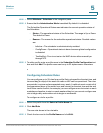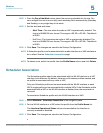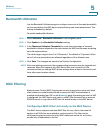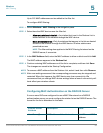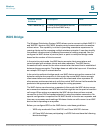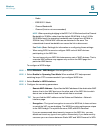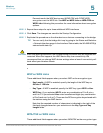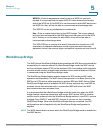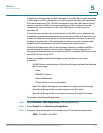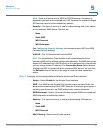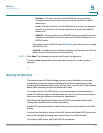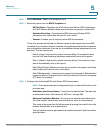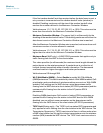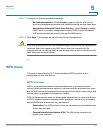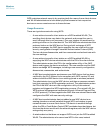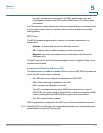
Wireless
WorkGroup Bridge
Cisco Small Business WAP121 and WAP321 Wireless-N Access Point with PoE 94
5
In WorkGroup Bridge mode, the BSS managed by the WAP device while operating
in WAP device mode is referred to as the access point interface, and associated
STAs as downstream STAs. The BSS managed by the other WAP device (that is,
the one to which the WAP device associates as an STA) is referred to as the
infrastructure client interface, and the other WAP device is referred as the
upstream AP.
The devices connected to the wired interface of the WAP device, as well as the
downstream stations associated with the access point interface of the device, can
access the network connected by the infrastructure client interface. To allow the
bridging of packets, the VLAN configuration for the access point interface and
wired interface should match that of the infrastructure client interface.
WorkGroup Bridge mode can be used as range extender to enable the BSS to
provide access to remote or hard-to-reach networks. A single-radio can be
configured to forward packets from associated STAs to another WAP device in the
same ESS, without using WDS.
Before you configure WorkGroup Bridge on the WAP device, note these
guidelines:
• All WAP devices participating in WorkGroup Bridge must have the following
identical settings:
- Radio
- IEEE 802.11 Mode
- Channel Bandwidth
- Channel (Auto is not recommended)
See Radio (Basic Settings) for information on configuring these settings.
• WorkGroup Bridge mode currently supports only IPv4 traffic.
• WorkGroup Bridge mode is not supported across a Single Point Setup.
To configure WorkGroup Bridge mode:
STEP 1 Select Wireless > WorkGroup Bridge in the navigation pane.
STEP 2 Select Enable for the WorkGroup Bridge Mode.
STEP 3 Configure these parameters for the Infrastructure Client Interface (upstream):
• SSID—The SSID of the BSS.



